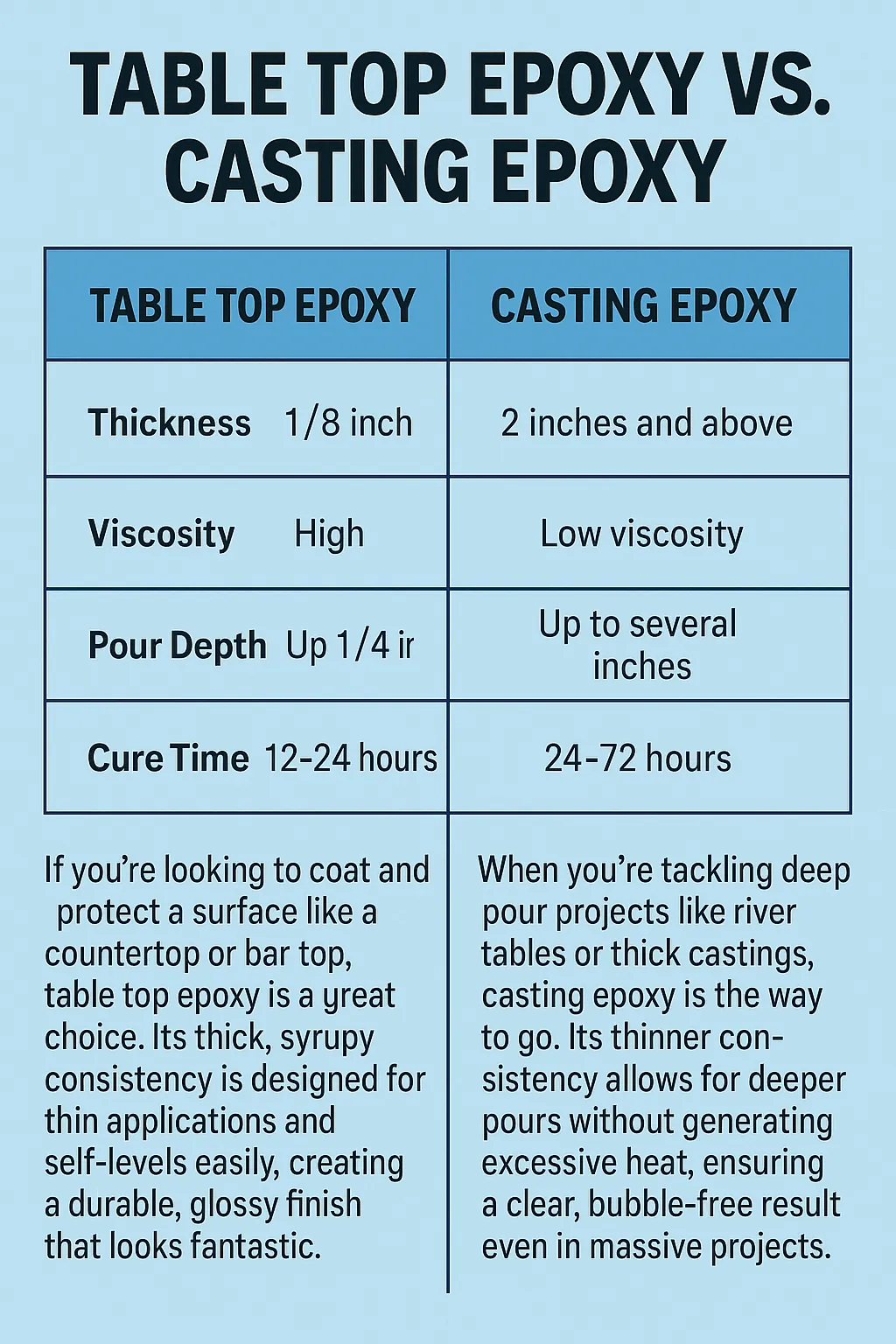Epoxy Resin for Furniture Repair: How to Restore Your Old Furniture Like a Pro

Epoxy Resin for Furniture Repair: How to Restore Your Old Furniture Like a Pro
Old furniture has charm, history, and character. But over time, wear and tear can diminish its beauty and functionality. Whether it’s a family heirloom or a vintage piece you found at a flea market, repairing it with the right materials is key. Epoxy resin for furniture repair offers a long-lasting solution to fix cracks, chips, and broken parts, restoring the furniture to its original beauty.
In this guide, we’ll walk you through common furniture repair challenges and how the right epoxy resin can help you restore and preserve your favorite pieces.
Mistake #1 – Using the Wrong Resin for Furniture Repair
Not all epoxy resins are created equal. Some resins are designed for industrial applications, while others are better suited for crafting or furniture repair. Choosing the wrong type can result in cracks, yellowing, or poor bonding.
Fix: Use high-strength, clear, and flexible resins like our 2116AB for furniture repair. It offers great bonding to wood and dries clear, perfect for restoring your furniture’s appearance.
Mistake #2 – Skipping Surface Preparation
Before applying epoxy resin, the surface must be clean, dry, and properly prepped. Failing to remove dirt, oils, or old finishes can prevent the resin from bonding correctly.
Fix: Sand the surface, clean it with a tack cloth, and ensure the surface is dry before applying epoxy resin. This step ensures that the epoxy adheres well and forms a smooth, strong surface.
Mistake #3 – Not Using the Right Curing Time
Improper curing can lead to weak spots, sticky surfaces, or uneven finishes. It’s essential to let the resin cure fully before sanding or finishing.
Fix: Follow the manufacturer’s instructions for curing time. Our 2118AB resin cures quickly and provides a durable, scratch-resistant surface after 24 hours of curing at room temperature.
Mistake #4 – Not Filling Cracks and Gaps Properly
When repairing large cracks or holes in wood or other furniture materials, it’s important to fill the void completely before applying resin.
Fix: Use a filler resin like 3136AB to fill larger cracks and holes before applying the top layer of epoxy. This prevents uneven curing and ensures a seamless repair.
Mistake #5 – Applying Too Much Resin
Using too much resin can result in excess dripping, bubbles, and an uneven finish. It can also lead to warping or cracking once it cures.
Fix: Apply resin in thin layers, allowing each layer to cure before applying the next. This process helps avoid drips and provides a smoother finish. Our 2116AB-F formula is perfect for thin, controlled applications.
Recommended Epoxy Resin for Furniture Repair Projects
- 2116AB – High-strength, clear resin for small repairs and cracks
- 3136AB – Filler resin for larger cracks and holes in wood and other materials
- 2118AB – Fast-curing resin for quick repairs and a durable finish

Get Expert Help with Your Furniture Repair Projects
Choosing the right epoxy resin for furniture repair is crucial to achieving professional results. Whether you’re fixing a broken chair, restoring a table, or repairing a cabinet, the right resin can make all the difference.
📩 Need help choosing the best epoxy resin for furniture repair?
Contact our technical team: sale5@wingwaiepoxy.com
🔗 Browse our epoxy resin product catalog
📘 Learn more from Wood Magazine’s epoxy finish guide for woodworking professionals.





